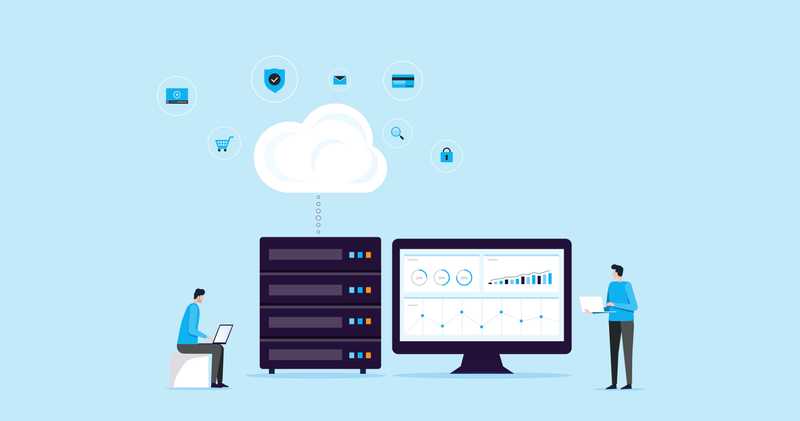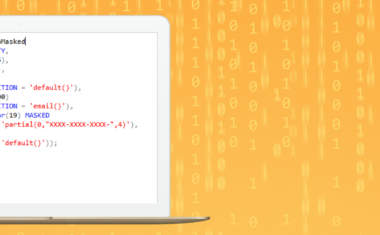Free Data Analytics Course
Jumpstart your journey with 25 essential learning units in data analytics. No cost, just knowledge.
Interviewing as a data analyst is a skill unto itself. The unfortunate truth is that it’s possible to be a very good data professional but have a tough time answering the questions lobbed at you by hiring managers. At the same time, you should be encouraged knowing that you can quickly learn how to give all the right answers in the interview room.
We’ve compiled a list of the most common data analyst technical interview questions to make your life easier. Use this as a kind of playbook to understand the data analysis themes that are covered in interviews and how you can deliver concise accurate answers.
Entry-Level Interview Questions for Data Analysts
Entry-level data analysts are often asked rather foundational questions about the discipline. These might be things that you’ve overlooked to focus on what seem like more important or technical topics. Let’s take a look at what you can expect.


Become a Data Analyst. Land a Job or Your Money Back.
Transform real-world datasets into actionable recommendations. Master technical and strategic thinking skills and frameworks. Land a job — or your money back.
What Does a Data Analyst Do?
A data analyst is a professional who collects data, processes it, and produces insights that can help solve a problem. Data analysis is interdisciplinary and can be used in industries like finance, business, science, law, and medicine.
Below are some of the responsibilities of a data analyst:
- Collect and clean data
- Use statistical techniques to analyze data and produce reports
- Establish key business results by working with various stakeholders
- Commissioning and decommissioning datasets
- Set up processes for data mining, data cleansing, and data warehousing
What Are the Most Important Skills for a Data Analyst?
Below are the main skills that a data analyst is required to possess:
- Data collection and organization
- Statistical techniques to analyze data
- Reporting packages to create reports and dashboards
- Data visualization tools like Tableau
- Data analysis algorithms
- Problem solving approaches
- Verbal and written communication
Define the Data Analysis Process
Data analysis is the process of collecting, cleaning, transforming, and analyzing data to generate insights that can solve a problem or improve business results.
What Process Would You Follow While Working on a Data Analytics Project?
Some of the key steps are:
- Understanding the business problem
This is the first step in the data analysis process. This will tell you what are the questions you’re seeking answers for, what hypothesis are you testing, what parameters to measure, how to measure them, etc. - Collecting data
An important function of the data analytics job is to find the data needed to provide the insights you’re seeking. Some of these might be existing data, which you can access instantly. You might also need to collect new data in the form of surveys, interviews, observations, etc. Gathering the information in an accurate and actionable way is crucial. - Data exploration and preparation
Now, understand the data itself. The parameters, empty fields, correlations, regression, confidence intervals, etc. Clean your data by removing errors and inconsistencies to make sure it’s ready for meaningful analysis. - Data analysis
Manipulate the data in various ways to notice trends and patterns. Pivot tables, plotting, and other visualization methods can help see the answers clearer. Based on the analysis, interpret and present your conclusions. - Presenting your analysis
As a data analyst, you will regularly take the findings back to the business teams in a form that they can understand and use. This could be as presentations, or through visualization tools like Power BI. - Predictive analytics
Depending on whether it’s your role or not, some data analysts also build machine learning models and algorithms as part of their day job.
What Are the Biggest Challenges You’ve Encountered in Data Analytics and How Did You Address Them?
This is an opportunity to reveal what you’ve learned as a data analyst at a personal level. It’s a great question to have a meaningful discussion about the challenges in data analytics. Be open and tell your story. The quality of data is a huge problem for analysts. Incomplete, inconsistent, error-prone or badly formatted data sucks a lot of the data analysts’ time and energy. Give examples from your own personal projects to support this point.
Also, remember to mention how you solved them. Whether you spent extra time in data cleaning, or wrote scripts to automate it, or re-structured data collection processes, talk about it. Don’t just highlight the issues, also present possible solutions.
Does a Data Analyst Need Data Analytics Tools? If So, Name the Top Ones.
Data analysts may use several tools depending on the nature of the problem they are working on. Microsoft Power BI, Tableau, Excel, and KNIME are a few popular data analysis tools.
What’s more important than the specific tools themselves is knowing how to choose the right one for the problem you’re solving and the organization that you’re working within.
Start by assessing the nature of the problem and the individuals within the organization who will be using the tool. Are they seasoned data analysts or are they not too familiar with the discipline?
Next, look at the tool’s modeling capabilities. Some are able to perform modeling themselves, which comes in handy if that’s an important requirement. If not, you might want to go with a more simple query language like SQL. (Related Read: 105 SQL Interview Questions and Answers)
Finally, take price and licensing into consideration. You want to choose a product that your company can afford over the long term with licensing terms that allow for what you’re trying to achieve.
Define Data Cleansing.
Data cleansing is the process of identifying and correcting irrelevant, incorrect, and incomplete data. It ensures that the final dataset contains usable and consistent data that can produce valuable insights.
Data Mining vs Data Profiling: What Is the Difference?
Data mining involves processing data to find patterns that were not immediately emergent in it. The focus is on analyzing the dataset and detecting dependencies and correlations within it.
Data profiling, on the other hand, implies identifying the attributes of the data in a dataset. That includes attributes such as datatype, distributions, and functional dependencies.
Define Outlier. Explain Steps To Treat an Outlier in a Dataset.
An outlier is a piece of data that varies significantly from the average features of the dataset that it is in.
There are two methods to treat outliers:
- Box plot method. In this method, a particular value is classified as an outlier if it is above the top quartile or below the bottom quartile of that dataset.
- Standard deviation method. If a value is greater than or less than the mean of the data +/- (3*standard deviation), then it is called an outlier in the standard deviation method.
What Is the Difference Between Data Analysis and Data Mining
Data analysis is the broad process of collecting, cleaning, modeling, and transforming data to gain important insights. Data mining is the more specific practice of finding rules and patterns in data, which is why it’s also called the knowledge discovery process.
What Is Metadata?
Metadata is data that talks about the data in a dataset. That is, it’s not the data you’re working with itself, but data about that data. Metadata can give you information on things like who produced a piece of data, how different types of data are related, and the access rights to the data that you’re working with.
What Is KNN Imputation?
K-Nearest Neighbors (KNN) is an algorithmic method to replace missing values in a dataset with some plausible values. KNN assumes that you can approximate a missing value by looking at other values closest to it. It is more effective/accurate than using mean/median/mode, and can be performed easily using libraries like scikit-Learn.
What Is Data Visualization? How Many Types of Visualization Are There?
Data visualization is the practice of representing data and data-based insights in graphical form. Visualization makes it easy for viewers to quickly glean the trends and outliers in a dataset.
There are several types of data visualizations, including:
- Pie charts
- Column charts
- Bar graphs
- Scatter plots
- Heat maps
- Line graphs
- Bullet graphs
- Waterfall charts
Do Data Analysts Need Python Libraries?
Python libraries are built-in code blocks that can be used repeatedly to carry out specific functions in a program. Using these modules can make a data analyst’s workflow a lot more efficient.
Some of the commonly used Python data analysis libraries are:
- Numpy
- Matplotlib
- Scipy
- Bokeh
What Is a Hashtable?
A hashtable is a data structure that stores data in an array format using associative logic. The use of arrays means that every value is given its own index value. This makes accessing the data easy.
Describe a Time When You Had To Persuade Others. How Did You Get Buy-In?
The goal of this question is for recruiters to get an idea of your soft skills and ability to present ideas in a compelling manner.
Start by talking about the project and the idea that you had to persuade others of. Talk about the approach that you used to make a strong argument for it, like by presenting data about it or giving examples of where it has succeeded before.
Also include details about the soft skills that came into play when you went about this process. Talk about how you used things like good verbal or written communication, discussions, and created a collaborative environment.
Finally, talk about how your colleagues or clients were persuaded and what that enabled you to achieve in the project.
Get To Know Other Data Analytics Students
Nelson Borges
Insights Analyst at LinkedIn
Gilles Ngomeni
Sales Analyst at Medline Industries
Joel Antolijao
Data Analyst at FanDuel
Advanced Data Analyst Interview Questions
The more you advance in your data analytics career, the more recruiters expect you to know about the field of data analysis. That includes not just technical know-how, but an understanding of where data fits into organizational goals and managing teams. Here are some of the interview questions you can expect as a senior data analyst.
How Would You Define a Good Data Model?
A good data model exhibits the following:
- Predictability: The data model should work in ways that are predictable so that its performance outcomes are always dependable.
- Scalability: The data model’s performance shouldn’t become hampered when it is fed increasingly large datasets.
- Adaptability: It should be easy for the data model to respond to changing business scenarios and goals.
- Results-oriented: The organization that you work for or its clients should be able to derive profitable insights using the model.
What Is Collaborative Filtering?
Collaborative filtering is a kind of recommendation system that uses behavioral data from groups to make recommendations. It is based on the assumption that groups of users who behaved a certain way in the past, like rating a certain movie 5 stars, will continue to behave the same way in the future. This knowledge is used by the system to recommend the same items to those groups.
What Is Data Wrangling?

Data wrangling is the process of taking raw data and cleaning and enriching it so that it can be analyzed easily to generate trends and patterns. This process makes all downstream uses of data a lot more efficient.
What Is Time Series Analysis?
Time Series Analysis is a data analysis approach that analyzes a dataset over certain intervals of time. It can be especially valuable in areas where tracking data over time can unearth valuable insights. For example, a time series analysis of COVID-19 can help us see trends in the way the disease has spread.
What Is the Difference Between Time Series Analysis and Time Series Forecasting?
Time series analysis simply studies data points collected over a period of time looking for insights that can be unearthed from it. Time series forecasting, on the other hand, involves making predictions informed by data studied over a period of time.
What Is Clustering? List the Main Properties of Clustering Algorithms.
Clustering is the technique of identifying groups or categories within a dataset and placing data values into those groups, thus creating clusters.
Clustering algorithms have the following properties:
- Iterative
- Hard or soft
- Disjunctive
- Flat or hierarchical
What Is Univariate, Bivariate, and Multivariate Analysis?
Univariate analysis is when there is only one variable. This is the simplest form of analysis like trends, you can’t perform causal or relationship analysis this way. For example, growth in the population of a specific city in the last 50 years.
Bivariate analysis is when there are two variables. You can perform causal and relationship analysis. This could be the gender-wise analysis of growth in the population of a specific city.
Multivariate analysis is when there are three or more variables. Here you analyze patterns in multidimensional data, by considering several variables at a time. This could be the break up of population growth in a specific city based on gender, income, employment type, etc.
What Is a Pivot Table?
A pivot table is a data analysis tool that sources groups from larger datasets and puts those grouped values in a tabular form for easier analysis. The purpose is to make it easier to find figures or trends in the data by applying a particular aggregation function to the values that have been grouped together.
What Is Logistic Regression?
Logistic regression is a form of predictive analysis that is used in cases where the dependent variable is dichotomous in nature. When you apply logistic regression, it describes the relationship between a dependent variable and other independent variables.
What Is Linear Regression?
Linear regression is a statistical method used to find out how two variables are related to each other. One of the variables is the dependent variable and the other one is the explanatory variable. The process used to establish this relationship involves fitting a linear equation to the dataset.
What Is the Role of Linear Regression in Statistical Data Analysis?
Linear regression is a powerful technique within statistical data analysis. It helps you establish relationships between different variables, which is very handy in evaluating business outcomes.
Consider an example where a credit card company wants to know which factors lead to customers defaulting on payments. Applying linear regression can help the company zero in on the characteristics of defaulters, and thus help the company improve the profile of its clients.
Explain Kmeans Clustering.
Analysts use K-means clustering to partition observations into k non-overlapping sub-groups called clusters. It is a popular technique for cluster analysis in data mining.
What Do You Mean by Hierarchical Clustering?
Hierarchical clustering is a data analysis method that first considers every data point as its own cluster. It then uses the following iterative method to create larger clusters:
- Identify the values, which are now clusters themselves, that are the closest to each other.
- Merge the two clusters that are most compatible with each other.
Explain Data Warehousing.
A data warehouse is a data storage system that collects data from various disparate sources and stores them in a way that makes it easy to produce important business insights. Data warehousing is the process of identifying heterogeneous data sources, sourcing data, cleaning it, and transforming it into a manageable form for storage in a data warehouse.
How Do You Tackle Missing Data in a Dataset?
There are two main ways to deal with missing data in data analysis.
Imputation is a technique of creating an informed guess about what the missing data point could be. It is used when the amount of missing data is low and there appears to be natural variation within the available data.
The other option is to remove the data. This is usually done if data is missing at random and there is no way to make reasonable conclusions about what those missing values might be.
What Are the Different Data Validation Methods in Data Analytics?
There are a few methods used to validate the data in a dataset. The includes:
- Field-level validation: Correcting data as it is entered into the appropriate fields in a dataset.
- Form-level validation: The data entered by a user is validated in real-time and any erroneous data is flagged so that the user can correct it.
- Data saving validation: This involves validating the data in a database whenever it is saved.
- Search criteria validation: This validation technique is used when the results of a user’s query need to be highly relevant. The search criteria is validated so that the most relevant results of a query can be returned.
Name the Statistical Methods That Are Highly Beneficial for Data Analysts.
Some of the most widely used statistical methods in data analysis are as follows:
- Cluster analysis
- Regression
- Bayesian approaches
- Markov chains
- Imputation
What Is an N-Gram?
An n-gram is a method used to identify the next item in a sequence, usually words or speech. N-grams uses a probabilistic model that accepts contiguous sequences of items as input. These items can be syllables, words, phonemes, and so on. It then uses that input to predict future items in the sequence.
What Is the Difference Between Variance, Covariance, and Correlation?
Variance is the measure of how far from the mean is each value in a dataset. The higher the variance, the more spread the dataset. This measures magnitude.
Covariance is the measure of how two random variables in a dataset will change together. If the covariance of two variables is positive, they move in the same direction, else, they move in opposite directions. This measures direction.
Correlation is the degree to which two random variables in a dataset will change together. This measures magnitude and direction. The covariance will tell you whether or not the two variables move, the correlation coefficient will tell you by what degree they’ll move.
What Is a Normal Distribution?
A normal distribution, also called Gaussian distribution, is one that is symmetric about the mean. This means that half the data is on one side of the mean and half the data on the other. Normal distributions are seen to occur in many natural situations, like in the height of a population, which is why it has gained prominence in the world of data analysis.
Do Analysts Need Version Control?
Yes, data analysts should use version control when working with any dataset. This ensures that you retain original datasets and can revert to a previous version even if a new operation corrupts the data in some way. Tools like Pachyderm and Dolt can be used for creating versions of datasets.
Can a Data Analyst Highlight Cells Containing Negative Values in an Excel Sheet?
Yes, it is possible to highlight cells with negative values in Excel. Here’s how to do that:
- Go to the Home option in the Excel menu and click on Conditional Formatting.
- Within the Highlight Cells Rules option, click on Less Than.
- In the dialog box that opens, select a value below which you want to highlight cells. You can choose the highlight color in the dropdown menu.
- Hit OK.
You will see that all values below the one you entered have been highlighted in the Excel sheet.
Related Read: 65 Excel Interview Questions for Data Analysts
How Do You Differentiate Between a Data Lake and a Data Warehouse?
A data lake is a large volume of raw data that is unstructured and unformatted. A data warehouse is a data storage structure that contains data that has been cleaned and processed into a form where it can be used to easily generate valuable insights.
How Do You Differentiate Between Overfitting and Underfitting?
Underfitting and overfitting are both modeling errors.
Overfitting occurs when a model begins to describe the noise or errors in a dataset instead of the important relationships between data points. Underfitting occurs when a model isn’t able to find any trends in a given dataset at all because an inappropriate model has been applied to it.
How Many X Are in Y Place?
This question takes many forms, but the premise of it is quite simple. It’s asking you to work through a mathematical problem, usually figuring out the number of an item in a certain place, or figuring out how much of something could potentially be sold somewhere. Here are some real examples from Glassdoor:
- “How many piano tuners are in the city of Chicago?” (Quicken Loans)
- “How many windows are there in New York City, by your estimation?” (Petco)
- “How many gas stations are there in the United States?” (Progressive)
The idea here is to put you in a situation where you can’t possibly know something off the top of your head, but to see you work through it anyway. Basically, you want to pull the data you do have, or at least can approximate, and work yourself through a solution. Let’s take the number of windows in New York City as an example for the sample answer below.
Note: Figures in this answer do not necessarily realistically reflect facts; they are approximations (there are actually 8.6 million people in NYC, according to 2017 data, for example).
Sample answer: I believe there are about 10 million people in New York, give or take a couple million. Assuming each of them lives in a residential building, with three rooms or more, if there were one window per room, that would make approximately 30 million windows. I’m making a few different assumptions that are probably inaccurate. For instance, that everyone lives alone and that the average size of their residences is just three rooms with one window per room. Obviously, there will be a lot of variations in reality. But I think, in terms of residences, 30 million windows could be close.
Then you’d have to take windows for businesses, subway rail cars, and personal vehicles. If the average subway car seats 1,000 people, with 1 window per 2 seats, that’s 500 windows per car. A little more math: I’d guess there are at least enough subway cars to support the whole population of New York: so 10 million divided by 1,000 comes out to 10,000. So there are another 5 million windows for subway cars. If half of all people own their own vehicle, that’s another six windows per person, so 30 million more windows. I’d guess there are at least 100,000 businesses with windows in NYC. Let’s just say for the sake of argument there’s an average of 10 windows each. That’s another million. I’m sure there’s way more than that.
Overall, we’re at 66 million windows (30,000,000 x 2 + 5,000,000 + 1,000,000). All of this pretty much hinges on how close I am to the actual population of New York City. Also, there are other places to find windows, such as buses or boats. But that’s a start.
You Have 10 Bags of Marbles With 10 Marbles in Each Bag. All but One Bag Has Marbles Which Weigh 10g Each. The Exception’s Marbles Weigh 11g Each. How Would You Determine Which Bag Has 11g Marbles Using a Scale Only Once? (Google)
This question would be really difficult to figure out on the spot. Fortunately, it’s a puzzle with answers all over the place online.
The identifying factor for each of these bags of marbles is weight; fortunately, we have only one different bag. Unfortunately, we only have one chance to weigh, so we couldn’t just weigh each bag individually.
Instead, we can solve the problem if we put a different number of marbles from each bag into a new bag to weigh it and reverse engineer the identity of the heavier bag.
Let’s take 1 marble from the first bag, 2 from the second bag, 3 from the third bag, and so on. This way each bag we’ve drawn from is uniquely identifiable by the number of marbles missing. I’ve used my kindergarten-level illustration skills to draw this process.
The total number of marbles in the bag can be calculated now using the series sum formula alluded to in question 5: n(n+1)/2. If we plug the numbers in, we should get 55. Now we have to multiply it by the weight of each marble, which is 10g. That means the total weight of the marbles should be 550g, in a perfect world.
But we’re not in a perfect world. One of these bags is different. Let’s say, for argument’s sake, the third bag is the one that has the heavier 11g marbles. The weights would look like this: 10, 20, 33, 40, 50, 60, 70, 80, 90, 100. If you weighed this, in total, it would add up to 553. Clearly, one of these bags has botched things up. To find out which one, we can subtract 550 from 553, getting 3. In other words, the third bag is the odd one out. The formula, then, would look like this: W – w(n(n+1)/2), where W = total weight and w = weight of each marble (except the odd ones).
Note that we’ve labeled the bags 1-10 based on the number of marbles taken from it. The difference won’t necessarily be this number, however. If the bag were more than 1g heavier or lighter, we’d have to do more math. Say, for example, the odd marbles weighed 12g instead; the difference would have been 6. This still points to the third bag because we know that the odd marbles are 2g heavier than the other marbles. If we divide 6 by 2, we get 3.
Technical Tests a Data Analyst Has To Complete During an Interview
There are a variety of technical tests that a data analyst might have to complete during an interview. The specific tests that you will be asked to complete will vary depending on the role and the company. However, some common technical tests for data analysts include:
- Data cleaning and preparation: In order to assess your ability to clean and prepare data for analysis, you might be asked to remove duplicates, correct errors, and transform data into a format that is suitable for analysis during the technical portion of the interview.
- Data analysis: This test will assess your ability to analyze data using statistical methods by creating visualizations, identifying trends, and making predictions.
- Coding: You’ll need to showcase your ability to code in a programming language such as R, Python, or SQL by writing scripts to automate tasks, developing machine learning models, or creating web applications.
In addition to technical tests, you may also be asked to complete a case study or a presentation to assess your ability to apply your skills and knowledge to a real-world problem. The presentation will assess your ability to communicate your findings to a non-technical audience.
Typical technical tests may include:
Data cleaning and preparation
- Remove duplicates from a dataset.
- Correct errors in a dataset.
- Transform a dataset into a format that is suitable for analysis.
Data analysis
- Create a visualization of a dataset.
- Identify trends in a dataset.
- Make predictions based on a dataset.
Coding
- Write a script to automate a task.
- Develop a machine learning model.
- Create a web application.
Case study
- Analyze a real-world problem using data analysis techniques.
- Communicate your findings to a non-technical audience.
Presentation
- Give a presentation on a data analysis topic.
- Answer questions from the audience.
General Data Analytics Interview Questions & Answers
Introduce Yourself.
This question is your opportunity to give the recruiter your elevator pitch. It’s an open-ended question, but you don’t want to ramble on about your background and achievements.
Start by giving the recruiter your name and your academic background. Then talk about what got you interested in the field. Finish off with any certifications or interesting projects that you’ve worked on to show your proficiency in the field.
Make each of those parts of the answer brief, between one and two sentences.
What Do You Know About Data Analytics?
The purpose of this question is to gain an insight into your understanding of the field in a broad sense. Talk about data analytics in terms of its purpose in a business context and what it can help organizations achieve. Don’t wade too deep into the weeds; stick to explaining the importance of being able to process and interpret data the right way and how you approach those things.
Why Did You Opt for a Data Analytics Career?
This is your chance to slip into storytelling mode a little bit. Recruiters like when you can talk passionately about the field you’re working in and have personal reasons for why you want to work in it. Describe how you got interested in data analytics and the reasons for wanting to work in the field.
As much as possible, stay away from generic reasons for being interested in data science. Go into your own journey: how you heard about it, the resources you used to study different aspects of the field, and the work that you have done.
What Is the Most Challenging Project You Encountered on Your Learning Journey?
Recruiters ask this question to understand your problem-solving approach and ability to take the initiative on projects.
Answer by throwing back to a specific project that you worked on, starting with the goal of the project and its business context. Then talk about what problems emerged that made it challenging. Most importantly, talk about how you solved those problems, including details about both your own contributions as well as how you rallied your team around you.
Situational Question Based on the Resume
There are some questions that will emerge in response to specific pieces of information in your resume.
One common one is regarding gaps in a resume. If you have gaps in your resume, then give recruiters an honest answer about what caused it. You don’t want to go into too much detail. Simply explain what caused the gap and how you picked up where you left off in your data analytics journey.
Data Analytics Interview FAQs
How Do You Prepare for a Data Analyst Interview?
The first thing that you need to do to prepare is to understand what the company you’re applying to is trying to achieve with its data analysis efforts. Recruiters are quickly impressed when you show an understanding of the organizational context you’ll be working in.
After that, focus on your skills in regard to three things: data analysis math and statistics (here is a blog on statistics interview questions), data analysis approaches, and data analysis tools. Finally, attempt practice questions like the ones we’ve covered here (more on how to become a data analyst here).
How Should You Answer “Why Should We Hire You as a Data Analyst?” During an Interview?
This question is your opportunity to show that you can contribute to the company in meaningful ways and fit in with the ethos of the organization.
Answer this question by first talking about what you understand about the organization’s business goals. For example, you might say something like, “Your company is currently looking to use data analysis to inform which new customer categories it targets with its marketing efforts.” Then go into details about how your skills can contribute to the operation.
Just the fact that you’ve done your research in this manner is sure to impress recruiters. It is evident that you’re able to gather information and deduce what the company’s goals are based on what you find.
From there on in, you need to convince recruiters that you have the skills to fulfill your responsibilities within the organization. Any projects that you’ve done previously that might be similar to what you will be working on is worth mentioning here. Talk about the project in terms of its goals and how you contributed to it within your team.
It helps to talk about the process that you use to translate business goals into requirements for a data analysis project. How do you determine what data points are important? How will you source that data? How will you store the data and what kind of operations do you think are important to conduct on them? Going over these details is an important step to establish that you can add value to a company as a data analyst.
Cultural fit has also become an important consideration for hiring managers. Look out for the soft skills mentioned in the job description and connect them to your own strengths. For example, if the company says it’s looking for good collaborators, you can include details on how you make teamwork part of your process and bring various stakeholders on board. Most importantly, convey a passion for your field of work and the company that you’re looking to work in.
Since you’re here…
Interested in a career in data analytics? You will be after scanning this data analytics salary guide. When you’re serious about getting a job, look into our 40-hour Intro to Data Analytics Course for total beginners, or our mentor-led Data Analytics Bootcamp.
![Interview Questions for Data Analyst [2022 Prep Guide]](https://www.springboard.com/blog/wp-content/uploads/2019/08/interview-questions-for-data-analyst-2022-prep-guide.jpg)





